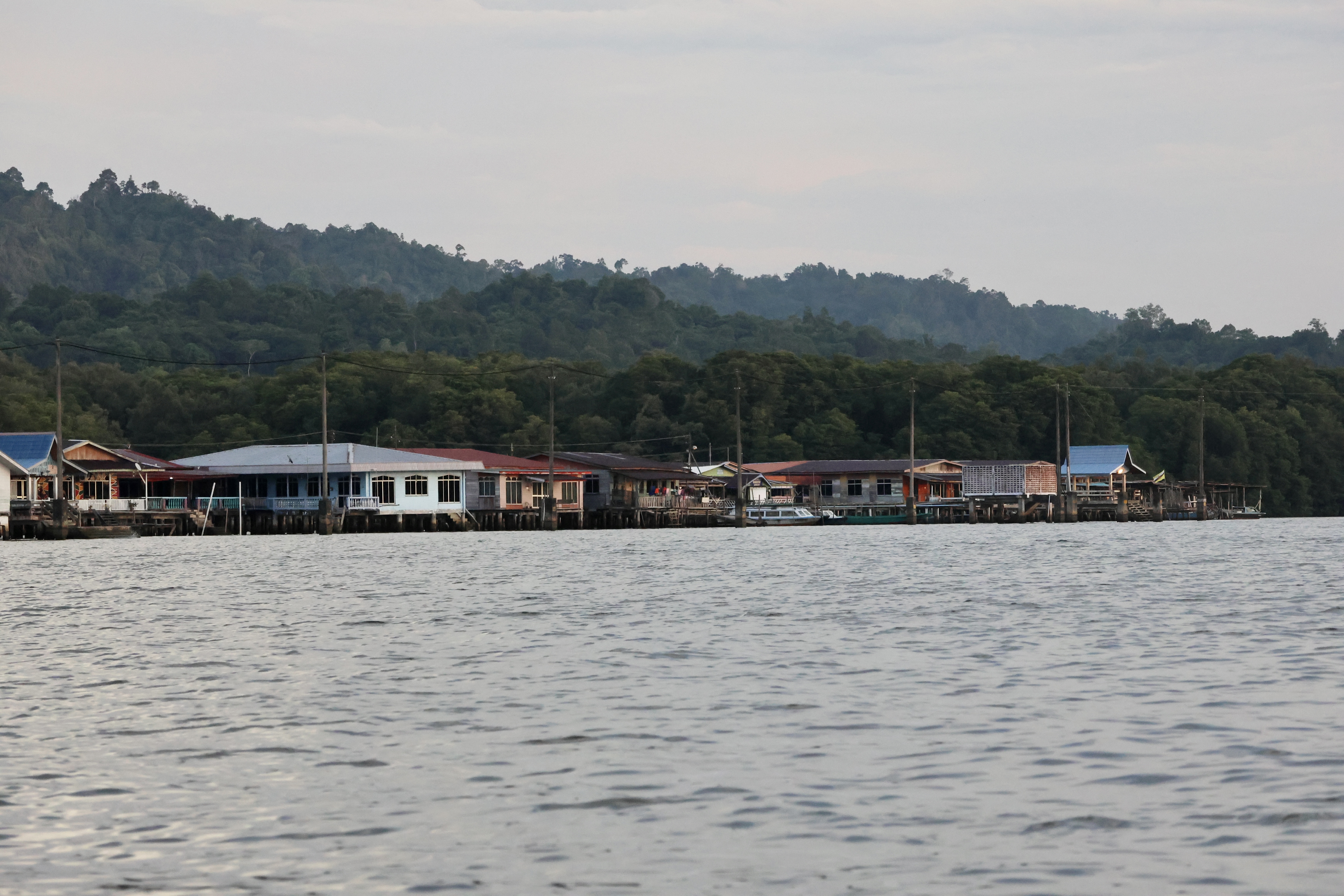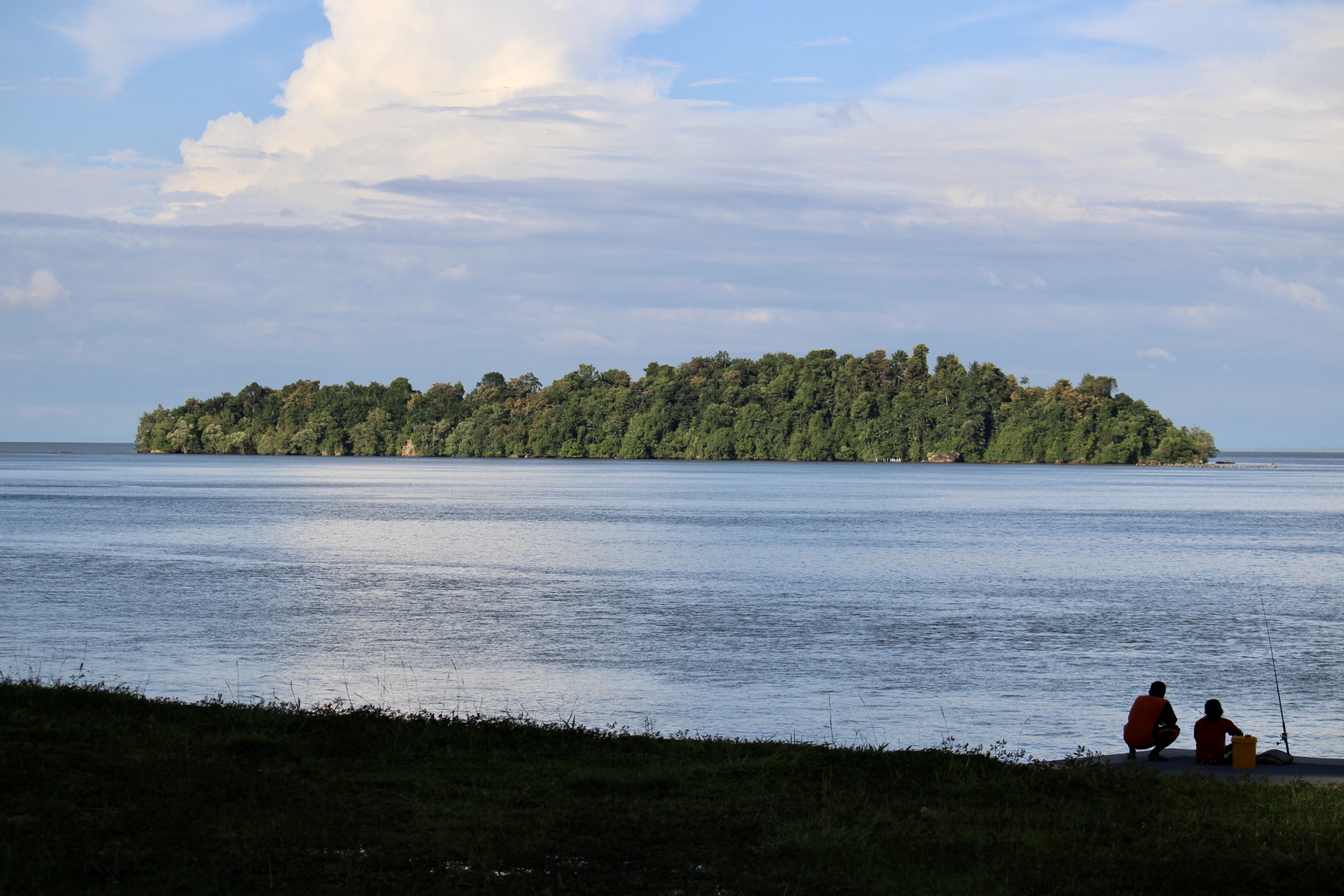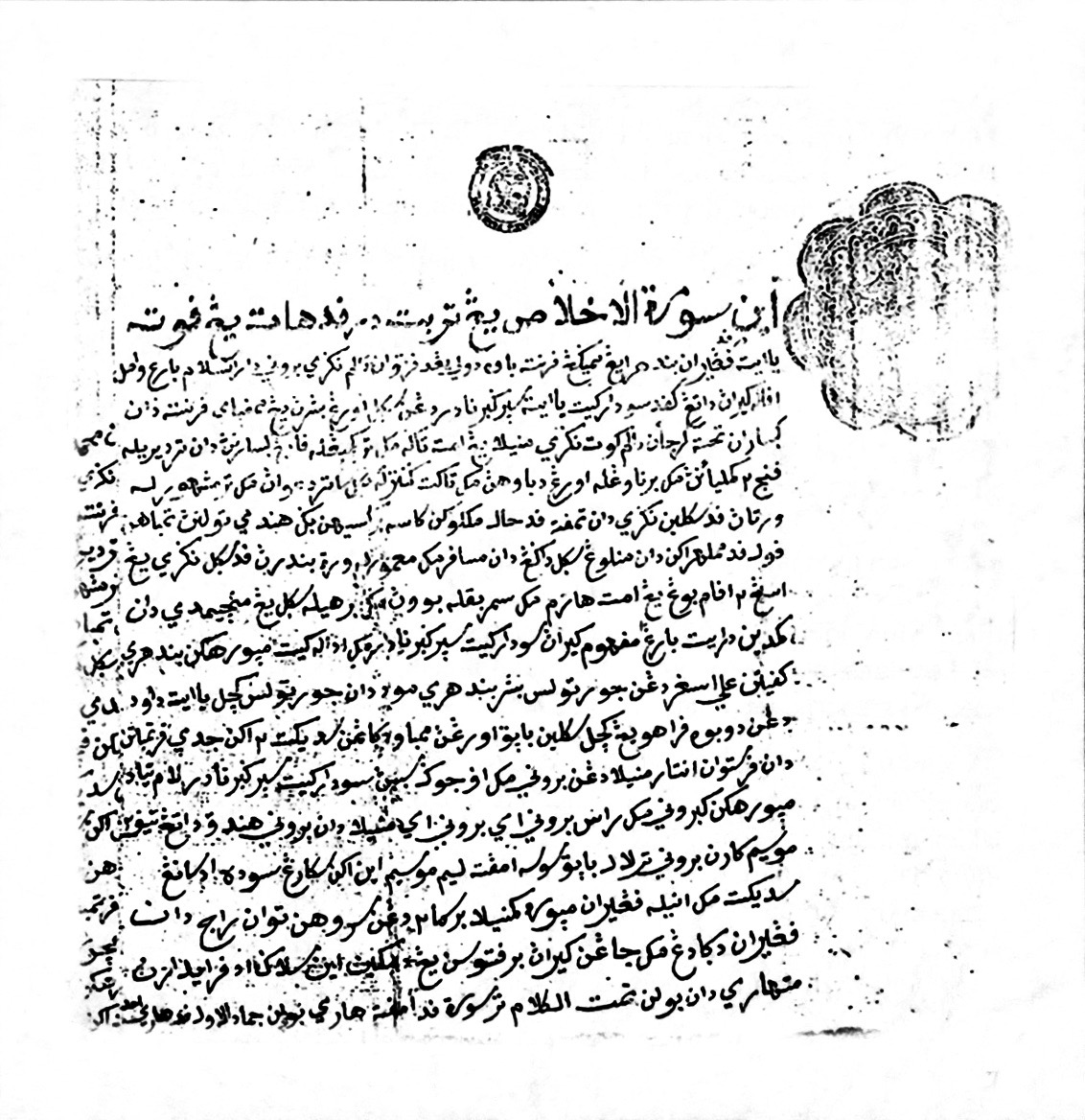1. Overview
Muhammad Alam, also known by the titles Sultan Tandzul Alam, Paduka Raja, and Sultan Panji Alam, was the self-proclaimed 22nd Sultan of Brunei. His reign is historically contested, with differing accounts placing it from 1822 to 1824, or from 1826 to 1828. He was widely known by the Malay nicknames Raja Api (King of Fire) and Sultan Marak Berapi, attributed both to his tough and strict demeanor and, in some traditions, to his birth being surrounded by fire. His rule was marked by significant political turmoil, including a major succession dispute with the traditional heir, Pengiran Muda Omar Ali Saifuddin, which escalated into a civil war. Despite his controversial and often harsh leadership, during his time, Brunei managed to maintain control over its territories, stretching from Tanjong Datu in Sarawak to Kimanis in Sabah. His legacy is complex, characterized by widespread public disapproval, allegations of brutality, and a blend of historical accounts and mythological folklore surrounding his character and the circumstances of his end.
2. Early Life and Background
Muhammad Alam's early life and family connections played a significant role in shaping his rise to influence within the Brunei Sultanate.
2.1. Family Relations
Muhammad Alam, also known as Pengiran Muda Muhammad Alam @ Mutalam, was the eldest son of Pengiran Digadong Ayah Pengiran Muda Muhammad Kanzul Alam ibnu Sultan Omar Ali Saifuddin I. His mother was Pengiran Anak Salamah Ibnu Pengiran Seri Rama, who was his father's second wife. He was a nephew of Sultan Muhammad Tajuddin ibnu Sultan Omar Ali Saifuddien, as his father was Sultan Muhammad Tajuddin's half-brother. His most prominent half-sister, Raja Isteri Noralam, was the eldest daughter from his father's first marriage to Pengiran Anak Saleha, and she was also the mother of Sultan Omar Ali Saifuddien II. His brothers included Pengiran Muda Hashim and Pengiran Badaruddin.
Muhammad Alam's wife was Pengiran Raja Isteri Nurlana Abdullah. He had several children, including Pengiran Anak Nur Alam, Pengiran Anak Salama, and Pengiran Muda Muhammad Omar Jaya. His descendants are confirmed to exist, with some tracing their lineage to Kampung Segaliud, Sandakan, Sabah.
2.2. Early Activities and Influence
Muhammad Alam gained considerable recognition both within Brunei and internationally during his father's reign. He and his father wielded significant economic influence, engaging in direct communication regarding commercial matters with figures like William Farquhar. Despite his wealth, he demonstrated submission to his father's authority, seeking his approval to respond to Farquhar's correspondence. This cooperative yet influential role within the royal court was noted by analysts, with his father even referring to him as "our friend" (sahabat kitaMalay) rather than "our son" (anakanda kitaMalay), indicating his substantial authority within the administration.
Muhammad Alam's resolute character was evident in incidents that tested Brunei's sovereignty. In 1809, during the "Si Merah" incident, a British officer bypassed customary royal protocol by directly approaching Muhammad Alam instead of the Sultan. Tensions escalated when Muhammad Alam physically intervened during a Lapau audience, throwing the lieutenant several feet away. Local accounts suggest this was in retaliation for Si Merah's challenge concerning a hunting dog named "Commerce," which was interpreted as a symbolic attempt to claim Brunei's territory. Muhammad Alam's firm response was seen as a defense of Brunei's interests against colonialism and an assertion of his father's dignity.
Another challenge to Brunei's sovereignty came from Sharif Hasan Al Habsi of Hadhramaut, who boasted he could conquer Brunei in half a day. Muhammad Alam, with the assistance of his siblings and local leaders, confronted Al Habsi in Ujung Sapoh Muara Besar. Al Habsi conceded after witnessing Muhammad Alam's tenacity, seeking forgiveness from both the Sultan and Muhammad Alam, and was subsequently pardoned. These events suggested that Muhammad Alam sometimes held more sway than his father, Sultan Muhammad Kanzul Alam.
During the 19th century, piracy posed a growing threat to trade routes and stability in Borneo's coastal regions. The British Government dispatched Captain Robert C. Garnham to enforce a blockade on Bornean ports, excluding Pontianak, Banjarmasin, and Brunei, to curb piracy and centralize commerce. Garnham and other foreign envoys found Muhammad Alam to be harsh and irritable, as he resisted their efforts. In 1813, Garnham sought his father's help in establishing authorized ports. Muhammad Alam's observant demeanor during an audience ceremony made Garnham uneasy, prompting him to conclude his business swiftly.
Muhammad Alam's authority within his father's administration was extensive; he may have even served as Deputy Sultan prior to his father's death. Indications of his increasing responsibility and power include his father's illness in 1826 and the Sultan allowing Muhammad Alam to receive a Dutch ambassador in his stead in 1823. Although his father approved his desire to ascend the throne, he retained symbolic items like the crown and the Kris Si Naga, maintaining a division of power.
The "Spiers Incident," as noted by H. R. Hughes-Hallett, further illustrates Muhammad Alam's character. Captain Spiers treated Muhammad Alam as a mere trader rather than a royal, which was considered disrespectful. When Captain Spiers departed Brunei before the scheduled trading time, Muhammad Alam questioned whether the British were trifling with Brunei. The Sultan responded with a strong statement demanding foreign commerce "behave," and Farquhar resolved the dispute by directing Captain Spiers to report for disciplinary action to the British Government in Bengal. These incidents collectively portray Muhammad Alam as a serious, harsh, and often intolerant figure, particularly towards foreign envoys, and suggest a monopolistic nature.
3. Reign and Major Activities
Muhammad Alam's period of rule was characterized by significant political unrest and his efforts to assert and maintain authority amidst a deeply divided populace.
3.1. Succession Dispute
Upon receiving his father's approval to take the throne, Muhammad Alam felt confident in his imminent rule, despite not possessing the symbolic crown and Kris Si Naga that traditionally signified full Sultanate power. However, his accession was met with widespread disapproval among the Bruneian populace. Unlike fifteen years earlier, when his father assumed power while the heir apparent was still a minor, Pengiran Muda Omar Ali Saifuddin had matured into a capable young man widely recognized as the rightful successor. Muhammad Alam's support base was largely confined to his commercial associates within Brunei. His authoritarian tendencies deepened the rift between him and his subjects, fostering widespread hostility toward his reign. While historically portrayed as a formidable leader during his father's rule, admired for his stern demeanor that sometimes protected Brunei from foreign deception, his actions also alienated foreign envoys and exacerbated internal discontent, ultimately isolating him as a feared figure.
This dispute originated from events in 1804 when Sultan Muhammad Tajuddin abdicated in favor of his son, Sultan Muhammad Jamalul Alam. Sultan Muhammad Tajuddin died shortly thereafter, leaving his infant son, Pengiran Muda Omar Ali Saifuddien, as the presumed heir. After resuming the throne for his grandchildren due to his deteriorating health, Sultan Muhammad Tajuddin sought the regency of Pengiran Digadong Ayah (Muhammad Kanzul Alam) in 1806, pledging to select advisors for Pengiran Muda Omar Ali until he reached adulthood. However, Pengiran Digadong Ayah broke this agreement when he proclaimed himself Sultan in 1807 upon Sultan Muhammad Tajuddin's death. He ruled alongside his son, Muhammad Alam, until his own passing in 1826. When Sultan Muhammad Kanzul Alam died, he chose Muhammad Alam as his successor, despite Muhammad Alam not possessing the royal regalia denoting absolute authority. This decision ignited a public dispute between Muhammad Alam and the followers of Omar Ali Saifuddien II.
3.2. Civil War
A civil war erupted in Brunei in the years following Muhammad Alam's father's death, roughly between 1826 and 1828. Concerned for their safety, Pengiran Muda Omar Ali Saifuddien and his allies relocated to Keingaran Island around 15 February 1826, where they likely declared themselves Sultans and established a defensive position. This migration may have been prompted by fears of Muhammad Alam's tyranny, including reports that he demanded blood rituals to maintain his invincibility. Such actions solidified his image as the ruthless Raja Api, as he allegedly used brutality and hostage-taking to intimidate supporters of Sultan Omar Ali Saifuddin II.

The majority of Brunei's population, particularly those in Kampong Burong Pingai (present-day Kampong Burong Pingai Ayer) and neighboring districts, favored Omar Ali Saifuddin II. The uprising against Muhammad Alam was led by Pehin Dato Perdana Menteri Abdul Hak, driven by the conviction that Omar Ali Saifuddien had a legitimate claim to the throne. Kampong Burong Pingai was known for its highly educated residents, including religious scholars who upheld Islamic doctrines and values of justice, which explains their support for Omar Ali Saifuddien. Previously, these villagers had supported Pengiran Muda Muhammad Yusof and Muhammad Alam through active trading, benefiting Brunei's economy. However, they turned against Muhammad Alam once he assumed power, joining Omar Ali Saifuddien's followers on Keingaran Island to establish blockades against his rule. Muhammad Alam's support, conversely, was limited to his close associates and family, underscoring how his harsh and despotic rule alienated the general public.
3.3. Territorial Defense and Rule
During his reign, Muhammad Alam also took actions to defend Brunei's territories from external threats. According to Malay accounts, he received news that the Tanjong Kidurung region was under threat from a group of pirates from Suluk who intended to conquer it. In response, he and his military forces traveled to Bintulu to defend the area. After successfully defeating the pirates at Tanjong Kidurung, he decided to establish a fortified position in Kuala Segan, Bintulu, which became his initial settlement with his followers.
He also sailed to Tatau with his followers, where he met the ruler of Tatau, Raja Kaya Jaban, and his wife Maying Rabiah. It was there that he married Lana, who became Pengiran Isteri Nur Lana Abdullah, with the marriage officiated by Pengiran Sahibul Khatib Haji Damit ibni Khatib Beqir, his religious minister. These actions demonstrate his active role in asserting control and defending the outlying regions of the Sultanate.
3.4. End of Reign and Abdication
The conclusion of Muhammad Alam's rule is subject to various historical accounts, marking the end of Brunei's civil war around 1828.

One commonly accepted narrative states that Muhammad Alam was on Chermin Island when assassins were dispatched to kill him. Raja Isteri Nooralam, the mother of Sultan Omar Ali Saifuddien II and Muhammad Alam's half-sister, was involved in this event. The assassins approached him, and to their surprise, he cooperated, providing them with advice on how to overcome his perceived invincibility before they buried and garrotted him on the island. However, historian Pehin Jamil challenges this account due to Muhammad Alam's known temper and the absence of eyewitness testimony.
An alternative interpretation suggests that Muhammad Alam willingly departed Brunei after admitting defeat, rather than being assassinated. In this version, he is said to have moved to Putatan in Sabah to live a simpler life. This narrative gains credibility from a 2009 investigation by the Brunei History Centre, which located a gravestone in Putatan believed to be Muhammad Alam's. The center noted that this gravestone is comparable to royal tombstones found in Brunei, while no concrete proof of his burial on Chermin Island or in the Royal Mausoleum has been discovered.
A third account, primarily from Malay sources, states that Muhammad Alam chose to settle in Bintulu and abdicated the throne to his regent, Pengiran Muda Omar Ali Saifuddin, who had visited him in Bintulu and requested his return to the palace. According to this narrative, Muhammad Alam, his family, and followers then resided in the Bintulu region. This account suggests a voluntary transfer of power rather than a violent end or a simple departure.
A chronology of events surrounding Muhammad Alam's reign reveals significant political unrest and succession conflicts in Brunei, indicating characteristics commonly associated with civil wars, such as internal unrest, factional battles, and challenges to legitimacy. Muhammad Alam's brother, Pengiran Muda Hashim, who participated in an abortive insurrection in the 1820s, remarked that Muhammad Alam's downfall marked the end of a stable, albeit rigorous, system of governance in Brunei. After his demise, his siblings and other relatives scattered, with some migrating to Sarawak.
4. Reputation and Evaluation
Muhammad Alam's public perception and historical assessment are complex, shaped by his character, ruling style, and the rich folklore associated with him.
4.1. Nicknames and Symbolism
Muhammad Alam was widely known by the Malay nicknames Raja Api (King of Fire) and Sultan Marak Berapi. These names arose from different interpretations. Some historical accounts attribute them to his tough and strict attitude and his harsh, irritable demeanor, particularly towards foreign envoys. Other local traditions suggest a more mythical origin, claiming he was born surrounded by fire, which contributed to his powerful and fearsome image. He was also known by other titles such as Paduka Raja and Sultan Panji Alam.
The symbolic interpretations and mythological elements attributed to him are abundant in local folklore. He is described as possessing extraordinary powers, such as the ability to breathe fire when enraged and to fly in search of blood to gain invincibility. This portrayal suggests that the local populace viewed him as a frightening and worrisome figure, with these mythical qualities serving as metaphorical accusations of his alleged misuse of authority and severe rule.
4.2. Criticism and Controversy
Muhammad Alam is largely portrayed negatively in historical and traditional narratives, primarily due to his reputation as a harsh and unforgiving leader rather than his actual skills. The term "Raja Api" implies that his cruel monarchy caused suffering for his citizens, reflecting a Malay practice of subtly criticizing unpopular rulers. Comparisons to mythical figures such as Raja Bersiong, a king known for consuming human blood, underscore the significance of folklore in depicting him with otherworldly qualities like flight and an appetite for human blood. These serve as symbolic accusations of his purported abuse of power and severe governance.
His traits included being serious and harsh in all interactions, frequently refusing to comply with orders or showing disrespect. These characteristics likely contributed to his intolerance throughout his rule. He is often described as having total intolerance for anything that did not go his way, and his actions in several accounts suggest a monopolistic nature.
4.3. European Sources and Traditions
European sources, including the works of Stamford Raffles and William Farquhar, corroborate some native narratives while offering additional perspectives, despite the possibility of hearsay and second-hand knowledge. The direct and objective literature from Europe contrasts with the more subjective local sources. Annabel Teh Gallop's extensive study of British accounts during his father's reign reveals Muhammad Alam's harsh character, marked by suspicion towards foreign envoys and a self-imposed role as the protector of Brunei and its royal court. This explains his cold and harsh treatment of many foreign envoys.

In addition to written records, Muhammad Alam is widely portrayed as a tyrant known as Raja Api or Sultan Marak Berapi in traditional legend. Historians such as Pehin Jamil and Yura Halim have utilized these stories to support their views on the period, noting that the folklore shares components with the 'Silsilah Raja-Raja Brunei' (Brunei Royal Genealogy) and European narratives, despite considerable changes over time. While European accounts often focus on his interactions with foreign powers and his perceived harshness, local traditions delve deeper into his mythical persona and the impact of his rule on the populace, often using symbolic language to convey criticisms of his authoritarianism.
5. Descendants and Legacy
The lineage of Muhammad Alam has been historically traced, confirming the presence of his descendants in later periods, particularly in Sabah.
5.1. Confirmation of Descendants
Historical efforts have been made to identify and verify Muhammad Alam's lineage. Notably, in the 1960s, Pengiran Besar Ibni Pengiran Anak Sabtu Ibni Sultan Hashim Jalilul Alam Aqamaddin, acting as a representative of Sultan Omar Ali Saifuddin III (the then-ruler of Brunei), visited Kampung Segaliud, Sandakan, Sabah. During this visit, descendants of Muhammad Alam, specifically through his son Pangeran Serruddin (Saifuddin), were discovered residing in the village. This finding was the result of the search efforts by Sultan Omar Ali Saifuddin III's representative.
A local resident, Yang Mulia Tuan Haji Omar @ Kabig bin Pengiran Sulaiman, provided an oral account of his own lineage and that of the village residents, tracing back to Pangiran Gomarang Kisor Emas. Following this, Pengiran Besar Ibni Pengiran Anak Sabtu Ibni Sultan Hashim Jalilul Alam Aqamaddin brought Yang Mulia Tuan Haji Omar @ Kabig Bin Pengiran Sulaiman to Brunei Darussalam. In approximately 1961, the oral genealogy was presented before Sultan Omar Ali Saifuddin III at Istana Darul Hana. As a result of this genealogical confirmation, Yang Mulia Tuan Haji Pengiran Haji Omar @ Kabig Bin Pengiran Sulaiman was presented with a complete set of black court attire, including a kris engraved with "Datu Panglima Garang" on its sheath.
The confirmed lineage of Muhammad Alam's children includes:
- Pengiran Serruddin (Saifuddin)
- Pengiran Deraman (Duraman) Riau
- Pengiran Gomarang Kisor Mas
- Pengiran Tabaron
- Pengiran Muda
- Pengiran Telok
- Pengiran Tarib (Tarid)
- Pengiran Sulaiman
- Pengiran Haji Omar @ Kabig
Beyond this confirmed lineage, Muhammad Alam's siblings and other relatives were scattered after his demise, with some migrating to Sarawak. The tracing of his descendants in Sabah highlights the enduring presence and recognition of his family line in the region.